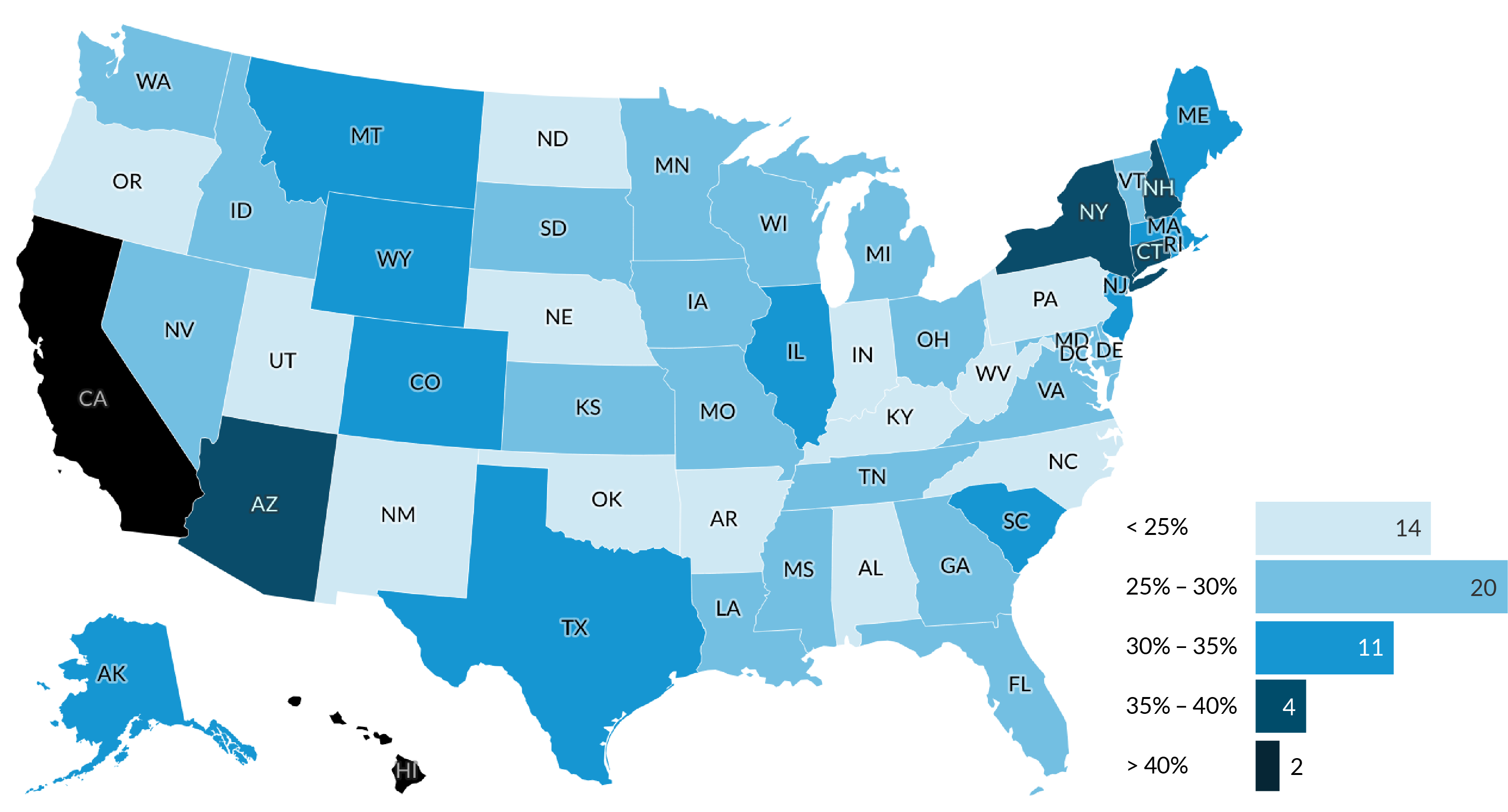
Many people do not receive the safety net benefits they’re eligible for. Barriers to accessing benefits vary across programs, and families may have widely different experiences with the safety net depending on the state they live in. Missing out on these benefits may mean families can’t afford basic expenses.
But what if families in every state received the benefits they qualify for? What would that mean in your state?
A recent Urban Institute analysis uses the Analysis of Transfers, Taxes, and Income Security (ATTIS) microsimulation model to estimate the potential effect on poverty rates and the total amount of benefits families would receive if seven safety net programs were fully funded and all eligible people participated. We provide these estimates for all 50 states and DC.
The analysis examines seven safety net programs: Supplemental Security Income (SSI); the Supplemental Nutrition Assistance Program (SNAP); the Special Supplemental Nutrition Program for Women, Infants, and Children (WIC); Temporary Assistance for Needy Families (TANF); child care subsidies supported by the Child Care and Development Fund (CCDF); the Low Income Home Energy Assistance Program (LIHEAP); and public and subsidized housing.
Of these seven programs, only two (SSI and SNAP) are entitlements, meaning the federal government funds benefits for all eligible people who apply. The remaining programs are not entitlements, meaning people who qualify aren’t guaranteed to receive benefits because of funding restrictions or limited program resources. For our analysis, we assume the programs reach full funding—meaning they have adequate funding to serve all eligible families—regardless of programs’ current funding structure. We also assume that all eligible families apply for and are able to use benefits.
We find that total benefits received increase substantially and poverty decreases substantially, with variations in the degree of those changes across states.
That variation can be attributed to differences in states’ current safety net participation rates, state populations, variation in states’ eligibility requirements and benefit levels in some programs, and funding constraints. Depending on where families with low incomes live, their experiences with safety net programs and the effectiveness of those programs may differ considerably.
Total benefits would increase if safety net programs were fully funded and everyone eligible participated
If the seven programs were fully funded and had full participation, the aggregate amount of benefits families receive would increase in all states. Nationally, the total amount of benefits received would be two times higher than what families receive under current funding and participation levels, increasing from $220 to $447 billion.
Across states, aggregate benefit amounts would be 1.6 times higher in Rhode Island, at the low end, and 2.8 times higher in West Virginia, at the high end. In general, if we estimate that a state sees a lower relative increase in total benefits received, it’s likely that a larger share of the eligible population already receives benefits under current funding levels.
Poverty would decrease substantially with full funding of and participation in safety net programs
Using the Supplemental Poverty Measure, the analysis shows that full funding of and participation in the seven programs would substantially reduce poverty in all states. Children would experience a particularly large reduction.
Nationally, we estimate that the poverty rate would decrease 31 percent, dropping from 14.7 to 10.1 percent. Across states, the reduction in poverty for all residents would range from 20 percent in Oklahoma to 46 percent in Hawaii. That variation holds true even within regions of the country; we find substantial differences in poverty reduction across states within every region.
Full funding of and participation in the safety net programs would also significantly decrease child poverty rates. Nationally, child poverty would decline by about 44 percent. Across all states, the reduction in child poverty would range from 28 percent in Arkansas to 77 percent in Hawaii.
Most States Would See SPM Poverty Reductions of 25 to 35 Percent under Full Funding of and Participation in Seven Safety Net Programs

Source: Urban Institute, applying the ATTIS (Analysis of Transfers, Taxes, and Income Security) model to the 2018 American Community Survey, IPUMS USA, University of Minnesota, https://www.ipums.org/, projected to 2022.
Notes: Poverty is measured using the Supplemental Poverty Measure (SPM). SNAP estimates do not include pandemic policies. SSI, TANF, and CCDF estimates include the impact of state-funded benefits when applicable. WIC estimates exclude benefits due to pregnancy. Estimates exclude people living in nursing homes, homeless shelters, or other group quarters and unhoused people.
Full funding of and participation in safety net programs would reduce poverty for all racial and ethnic groups
State-level decreases in poverty would vary across racial and ethnic groups under full funding of and participation in the safety net programs. Nationally, we estimate that poverty would decrease the most for Latinos, with declines across states ranging from 15 percent in Kentucky to 51 percent in Hawaii. (The data source used for the analysis asks people if they are “of Hispanic, Latino, or Spanish origin.” Here we’ve chosen to use the term Latino.)
Black people would experience the next biggest poverty reduction, ranging from 17 percent in West Virginia to 48 percent in California. Poverty reductions would range from 11 percent in South Carolina to 44 percent in Hawaii for Asian American and Pacific Islander residents and would range from 10 percent in DC to 45 percent in Hawaii for white residents.
Poverty may decline by different amounts across racial and ethnic groups for several reasons, including differences in program administration across states and the characteristics of certain racial and ethnic populations with low incomes in each state. Despite differences in poverty reductions across groups, expanding the reach of the seven programs in the analysis would decrease poverty for all people with low incomes, highlighting these programs’ power to improve families’ economic well-being.
Increased safety net participation could help families across the US meet their basic needs
The Urban analysis demonstrates that if seven safety net programs were fully funded and everyone eligible participated, poverty would decrease substantially in every state, especially among children. With this hypothetical expansion of safety net funding and participation, all eligible families—regardless of where they live—could receive additional support to afford food, housing, and other basic needs.
Though achieving full participation in safety net programs may not be possible with current funding levels, efforts from policymakers and government agencies to increase participation could provide economic security to more families across the US.